Welcome to the fascinating world of the Ophiuchus archetype in literature and art, an enigmatic and often overlooked figure that holds a unique place in mythology and the collective imagination. Bursting with symbolism and intrigue, Ophiuchus has captivated the minds of artists, writers, and thinkers throughout history. In this article, we will delve into the origins of Ophiuchus in mythological tales, explore its presence in literature and visual art, uncover its psychological significance, and discuss its controversial place in astrology. Join us on this journey of discovery as we unlock the mysteries and complexities of the Ophiuchus archetype.
Contents
- The Ophiuchus in Mythology
- Ophiuchus in Literature
- Ophiuchus in Visual Art
- The Psychological Significance of Ophiuchus
- Interpreting Ophiuchus Today
- Conclusion
-
Frequently Asked Questions
- 1. What is the significance of Ophiuchus in astrology?
- 2. How does Ophiuchus differ from the other zodiac signs?
- 3. Are there specific personality traits associated with Ophiuchus?
- 4. Can Ophiuchus be found in ancient civilizations and mythologies?
- 5. Which famous artworks incorporate the Ophiuchus archetype?
- 6. How does Ophiuchus fit into the theme of transformation in literature?
- 7. Is there a dark side to the Ophiuchus archetype?
- 8. What is the controversy surrounding Ophiuchus in astrology?
- 9. How can one apply the Ophiuchus archetype to personal development?
- 10. Can Ophiuchus have an impact on artistic creations in the modern world?
- References
-
Frequently Asked Questions
- 1. How does the Ophiuchus archetype differ from other zodiac signs?
- 2. Is Ophiuchus considered a positive or negative archetype?
- 3. Can you find Ophiuchus in ancient mythology?
- 4. Are there any famous works of literature that feature the Ophiuchus archetype?
- 5. How is the Ophiuchus archetype portrayed in modern literature?
- 6. What symbolism and imagery are associated with Ophiuchus in visual art?
- 7. Can you provide examples of famous artworks featuring the Ophiuchus archetype?
- 8. What is the psychological significance of Ophiuchus?
- 9. How does Ophiuchus relate to astrology and the controversial 13th zodiac sign?
- 10. How can individuals apply the Ophiuchus archetype to personal development?
- References
- Read More
The Ophiuchus in Mythology
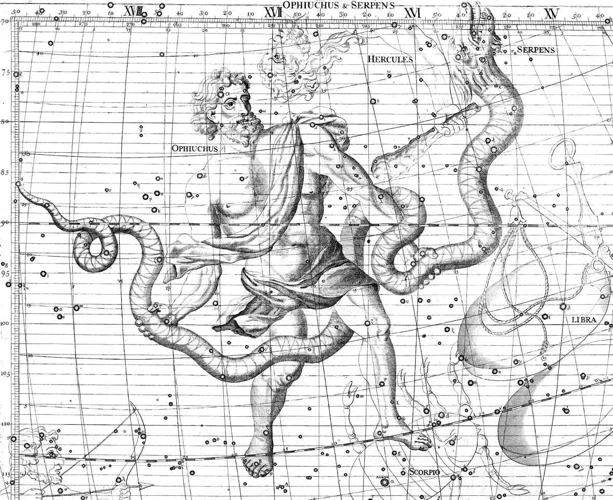
In mythological lore, the Ophiuchus archetype emerges as a compelling figure associated with healing, knowledge, and transformation. According to ancient tales, Ophiuchus is often identified as Asclepius, the Greek god of medicine. Legend has it that Asclepius possessed exceptional healing abilities, learning the art of medicine from the wise serpent, symbolizing wisdom and rejuvenation. This connection between Ophiuchus and serpents can be found in various cultures, such as the Egyptian depiction of Ophiuchus as Imhotep, the god of medicine and wisdom. The association between Ophiuchus and snakes represents the shedding of old skin, symbolizing transformative rebirth and rejuvenation. This archetype embodies the journey of self-discovery and the pursuit of knowledge, paving the way for personal growth and enlightenment. To explore more about personality traits associated with the zodiac, click here. For a deeper understanding of Ophiuchus’ connection with Jupiter and its influence on expanding horizons and luck, click here. Lastly, to learn about the origins and mythologies of other ancient constellations, click here.
The Origins of Ophiuchus
The origins of Ophiuchus can be traced back to ancient Mesopotamia, where it was known as the “Serpent Holder.” This constellation is closely associated with the character of Gilgamesh, the famed hero of the epic poem “Gilgamesh.” In the epic, Gilgamesh embarks on a quest for immortality after witnessing the death of his friend, Enkidu. On his journey, Gilgamesh encounters Utnapishtim, the only mortal to achieve eternal life. Utnapishtim tells Gilgamesh the story of a great flood and how he was granted immortality by the gods. This flood myth bears striking similarities to other flood narratives found in different cultures, such as the biblical story of Noah’s Ark. In the epic, Gilgamesh learns about the existence of a special plant with rejuvenating properties that grows at the bottom of the sea. He manages to retrieve the plant but loses it on the way back to his city when a serpent snatches it away. This serpent, symbolizing Ophiuchus, steals the plant, shedding its skin and renewing itself, further emphasizing its association with healing and transformation. The enduring tale of Gilgamesh and the role of Ophiuchus in it exemplifies the archetype’s significance in ancient mythology and its timeless symbolism of human aspirations and the pursuit of immortality.
Ophiuchus in Ancient Civilizations
In ancient civilizations, Ophiuchus played a significant role in various mythological and astrological belief systems. Let’s explore some notable ancient civilizations and their interpretations of the Ophiuchus archetype:
- Egypt: In Egyptian mythology, Ophiuchus was associated with Imhotep, the god of medicine and wisdom. Imhotep was often depicted as a man holding a staff entwined with a serpent, symbolizing his healing abilities and deep knowledge.
- Greece: Asclepius, the Greek god of medicine, was strongly linked to Ophiuchus. He was revered for his healing prowess and was often depicted holding a staff with a serpent coiled around it, which later became the symbol of medicine, the caduceus.
- Maya: The Maya civilization revered Ophiuchus as a symbol of fertility and renewal. Ophiuchus was associated with the god Ixchel, the goddess of healing, childbirth, and fertility. Ixchel was often depicted wearing a headdress adorned with serpent motifs.
- Babylon: In Babylonian astronomy, Ophiuchus was associated with the god Enki, the god of knowledge, magic, and water. Enki was believed to possess immense wisdom and was associated with healing and problem-solving.
These ancient civilizations recognized Ophiuchus as a powerful figure, often revered for its healing abilities, wisdom, and connection to the natural world. The serpent symbolism, commonly associated with Ophiuchus in these cultures, further emphasized the concepts of rebirth, transformation, and the potential for spiritual enlightenment. These interpretations highlight the enduring presence and significance of Ophiuchus across diverse ancient civilizations.
Ophiuchus in Literature
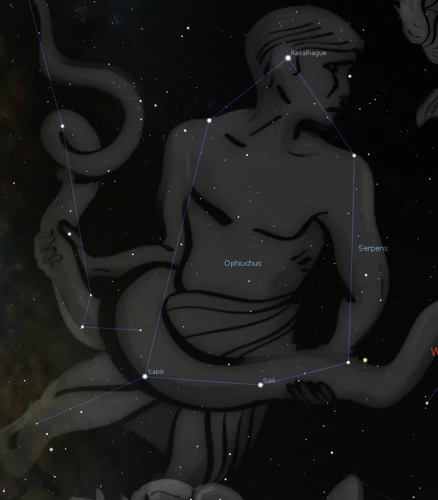
Ophiuchus has made its presence felt in various literary works, both classic and contemporary, leaving a lasting impression on readers. In classic novels, the representation of Ophiuchus often embodies the archetype of a healer or a guide on a transformative journey. Characters exhibiting Ophiuchus-like qualities offer solace and wisdom to the protagonist, aiding them in their personal growth and helping them navigate through challenging circumstances. Modern interpretations of the Ophiuchus archetype in literature take diverse forms, showcasing its complexity and multi-dimensional nature. Some authors explore the darker aspects of Ophiuchus, delving into themes of moral ambiguity, hidden knowledge, and the shadow side of human nature. These narratives provide readers with a deeper understanding of the complexities of the human psyche and the potential for both healing and destruction. Through their exploration of the Ophiuchus archetype, authors invite readers to ponder the transformative power of self-discovery and the intricate tapestry of human existence.
The Representation of Ophiuchus in Classic Novels
The representation of Ophiuchus in classic novels showcases the archetypal themes of healing, wisdom, and transformation that are intertwined with this mysterious figure. In literature, authors have often utilized Ophiuchus as a symbol of unique characters who possess the power to heal and guide others. In Nathaniel Hawthorne’s “The Scarlet Letter,” the character of Arthur Dimmesdale embodies the essence of Ophiuchus. Dimmesdale, a respected minister, carries the burden of a hidden sin and undergoes a transformative journey toward redemption. His path towards healing and self-discovery reflects the transformative qualities associated with Ophiuchus. Another example can be found in Mary Shelley’s “Frankenstein.” The creature, created by Victor Frankenstein, grapples with his existence, seeking knowledge and understanding. The creature’s quest parallels the archetypal journey of Ophiuchus, as he strives for self-realization and ultimately seeks to heal the loneliness within his heart. These classic novels intricately weave the Ophiuchus archetype into their narratives, emphasizing the profound impact and potential for transformation that this symbol holds.
Modern Interpretations of the Ophiuchus Archetype
Modern interpretations of the Ophiuchus archetype have taken different forms across literature, art, and popular culture. These interpretations often explore the complexities and nuances of the Ophiuchus character, delving into themes of healing, transformation, and the search for hidden knowledge. In contemporary literature, authors have created protagonists embodying the Ophiuchus archetype, individuals who possess deep wisdom and the ability to heal both themselves and others. These characters often navigate the realms of magic, spirituality, and self-discovery, wrestling with moral dilemmas and inner turmoil. They serve as symbols of personal growth and transformation, inspiring readers to embark on their own journeys of self-discovery. In visual art, Ophiuchus has been depicted in various interpretations, showcasing the archetype’s healing abilities and connection with serpents. Artists use vibrant colors, intricate symbolism, and mesmerizing imagery to capture the essence of Ophiuchus, inviting viewers to contemplate the power of transformation and the pursuit of wisdom. Additionally, popular culture has embraced the Ophiuchus archetype, integrating it into movies, television shows, and video games. These modern interpretations often highlight the archetype’s unique qualities, presenting characters who possess hidden knowledge and the ability to bring about profound change in their worlds. Whether through literature, art, or popular culture, modern interpretations of the Ophiuchus archetype continue to captivate audiences and provide a fresh perspective on this mysterious character.
Ophiuchus in Visual Art
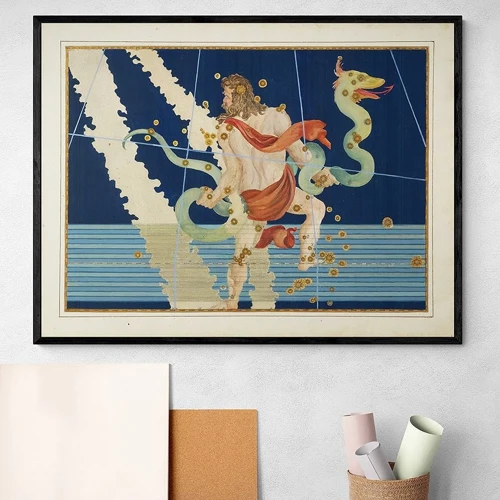
Ophiuchus, with its rich symbolism and captivating mythology, has been a source of inspiration for artists throughout history. In visual art, Ophiuchus is often depicted in various forms, each representing different aspects of its archetype. Symbolism and imagery associated with Ophiuchus draw on its connection to healing and transformation, showcasing serpents intertwining around a staff known as the Rod of Asclepius, a powerful symbol of medicine and wellness. These representations highlight the duality of Ophiuchus, as a figure associated with both the dark and light aspects of healing. Famous artworks such as “The Healing of the Nation” by Thomas Eakins and “Ophiuchus” by Salvador Dali masterfully capture the essence of the Ophiuchus archetype, evoking a sense of mystery, power, and transformation. Through their art, these artists explore the themes of healing, wisdom, and the intricate relationship between life and death. The visual renditions of Ophiuchus serve as a visual narrative that invites viewers to contemplate the profound journey of self-discovery and transformation.
Symbolism and Imagery Associated with Ophiuchus
Symbolism and imagery associated with Ophiuchus are rich with depth and meaning. Here, we explore the various elements that contribute to the captivating aura surrounding this archetype.
1. Serpents: The most iconic symbol associated with Ophiuchus is the serpent. Serpents represent wisdom, transformation, and healing. In many depictions, Ophiuchus is seen holding a serpent, signifying his mastery over these qualities.
2. Rod of Asclepius: Ophiuchus is often depicted with the Rod of Asclepius, a staff entwined by a single serpent. This symbol is widely recognized as a representation of healing and medicine. It is a significant emblem in the field of healthcare and is associated with the Greek god Asclepius, whom Ophiuchus is often identified with.
3. Rebirth and Renewal: Ophiuchus’ connection with serpents also represents the shedding of old skin and the concept of rebirth. The serpent’s ability to shed its skin and emerge revitalized serves as a powerful metaphor for personal transformation and growth.
4. Wisdom and Knowledge: As a symbol of wisdom, Ophiuchus embodies the pursuit of knowledge and the understanding of the mysteries of life. This archetype encourages seeking wisdom, learning from experience, and embracing truth.
5. Healing and Balance: Ophiuchus signifies healing and the restoration of balance. The archetype emphasizes the importance of finding harmony within oneself and in the world. Ophiuchus serves as a reminder to cultivate emotional, physical, and spiritual well-being.
6. Stars and Constellations: Ophiuchus is associated with the constellation of the same name, comprised of several bright stars. The constellation is often depicted as a man holding a serpent, reflecting the archetype’s symbolism.
The symbolism and imagery associated with Ophiuchus reflect its profound and multifaceted nature. This archetype brings together elements of wisdom, transformation, healing, and balance, inspiring individuals to embrace growth, seek knowledge, and strive for inner harmony.
Famous Artworks Highlighting the Ophiuchus Archetype
Famous artworks highlighting the Ophiuchus archetype have graced the world of visual art, captivating audiences with their profound symbolism and mesmerizing imagery. One such renowned masterpiece is “The Rod of Asclepius” by Michelangelo. This iconic sculpture depicts a powerful representation of Ophiuchus, the serpent-charmer, holding a staff entwined by a serpent. The artwork encapsulates the harmonious balance between healing, wisdom, and transformation that Ophiuchus embodies. Another notable piece is “The Ophiuchus” by Gustav Klimt, a mesmerizing painting that showcases a mesmerizing figure adorned with serpents, representing the archetype’s connection with rejuvenation and knowledge. The artwork’s rich colors and intricate details beautifully convey the complexity and mystique of the Ophiuchus archetype. Salvador Dali’s “The Discovery of America by Christopher Columbus” is another remarkable artwork that subtly incorporates elements of Ophiuchus. In this surrealist masterpiece, Dali highlights a figure resembling Ophiuchus, symbolizing the discovery and exploration of new frontiers in a transformative journey. These famous artworks not only pay homage to the Ophiuchus archetype but also invite viewers to contemplate the themes of healing, transformation, and the pursuit of knowledge that this intriguing figure represents.
The Psychological Significance of Ophiuchus
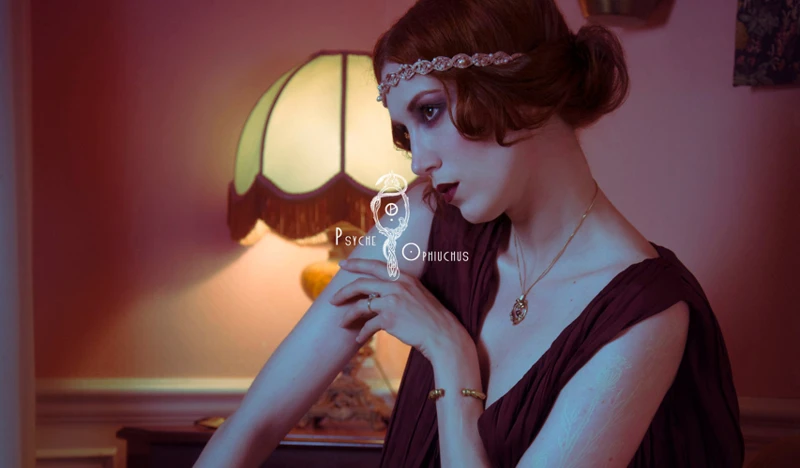
The Ophiuchus archetype holds significant psychological implications, representing themes of healing, transformation, and the integration of opposites. As a symbol of healing, Ophiuchus embodies the journey towards personal wholeness and the pursuit of inner balance. Those who resonate with the Ophiuchus archetype often possess deep empathy and a natural inclination towards helping others. They have a profound understanding of the human psyche and possess the power to facilitate healing and transformation in themselves and those around them. However, Ophiuchus also has a shadow side, representing the darker aspects of the human psyche. This archetype confronts the individual with their own vulnerability, mortality, and the unconscious forces that lurk within. Exploring the psychological significance of Ophiuchus allows individuals to gain insights into their own healing journey, confront their shadow aspects, and harness their transformative power.
Ophiuchus as a Symbol of Healing and Transformation
Ophiuchus, as a symbol of healing and transformation, holds a profound significance in various mythologies and psychological interpretations. Represented by the serpent intertwining around a staff, this archetype embodies the power of rejuvenation and the transformative journey of the human spirit. The serpent, a universal symbol of shedding old skin and rebirth, signifies the healing process and the potential for personal growth. Ophiuchus teaches us that healing is not merely the absence of physical ailments but also encompasses the healing of the mind, emotions, and soul. This archetype invites individuals to confront their inner shadows, face their fears, and embrace the process of inner transformation. Ophiuchus represents a transformative journey, a path of self-discovery, and the integration of fragmented aspects of the self. By working through challenges, confronting past traumas, and embracing the power of healing, individuals can experience profound personal growth, liberation, and a deeper connection to their authentic selves. The symbolism of Ophiuchus as a symbol of healing and transformation serves as a reminder that within each person lies the potential for profound change and renewal.
The Shadow Side of Ophiuchus: Darker Themes and Meanings
The Ophiuchus archetype, like any other, possesses a shadow side that explores darker themes and meanings. While Ophiuchus is often associated with healing and wisdom, it also encompasses a complex range of emotions and experiences. Delving into the shadow side of Ophiuchus reveals a depth of exploration into themes such as power struggles, manipulation, and even the potential for destruction. This darker aspect of the archetype highlights the inherent duality within humanity and serves as a reminder that even those who seek healing and transformation are not immune to the temptations of power or the depths of their own unconscious desires. Ophiuchus explores the transformative potential that comes with facing one’s own shadow and the process of integrating the darker aspects of the self. This duality can be seen in literary works where characters embody the Ophiuchus archetype, wrestling with their inner demons as they navigate the blurred lines between healing and harm. The shadow side of Ophiuchus challenges us to confront our own hidden desires and motivations, reminding us that the path to true transformation often involves confronting the darkness within ourselves.
Interpreting Ophiuchus Today
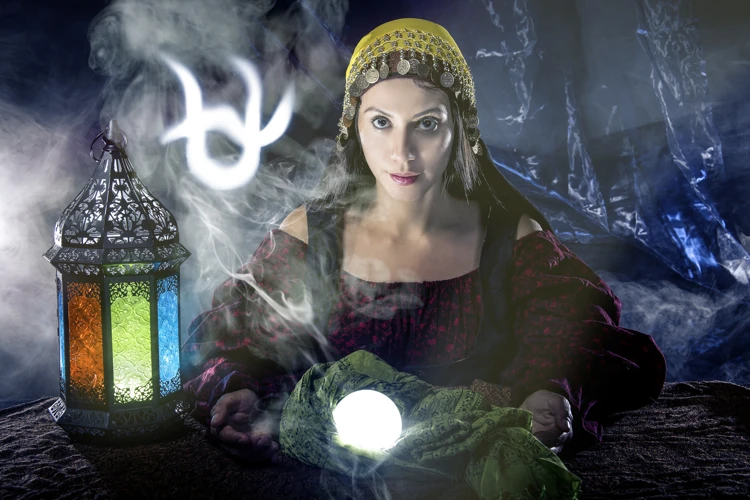
In contemporary times, interpreting the Ophiuchus archetype continues to spark debates and intrigue. While Ophiuchus is not officially recognized as a zodiac sign in Western astrology, some astrologers argue for its inclusion, adding a 13th sign between Scorpio and Sagittarius. This controversy stems from the shifting alignments of the Earth’s axis, leading to different interpretations throughout history. However, regardless of its astrological status, the Ophiuchus archetype still holds relevance in personal development and self-reflection. Those who resonate with Ophiuchus may find themselves drawn to themes of healing, transformation, and the pursuit of knowledge. By embracing the Ophiuchus archetype, individuals can tap into their innate abilities to heal themselves and others, while also undergoing profound personal transformations. To explore the controversy surrounding Ophiuchus in astrology, click here. For insights on applying the Ophiuchus archetype to personal development and growth, click here.
Ophiuchus in Astrology: The Controversy
Ophiuchus in Astrology: The Controversy
The inclusion of Ophiuchus in astrology has been a subject of great controversy and debate among astrologers and enthusiasts. Traditional astrology recognizes twelve zodiac signs, each corresponding to a specific time of the year. However, Ophiuchus, known as the 13th zodiac sign, has gained attention in recent years. Advocates argue that Ophiuchus should be incorporated into the astrological system due to its position along the ecliptic and its astrological significance.
Those who support the inclusion of Ophiuchus believe that its energy and characteristics should not be ignored. They propose that Ophiuchus represents a deeply transformative and healing energy, associated with spiritual growth and wisdom. They suggest that individuals born between November 29 and December 17 should align with Ophiuchus rather than their traditionally assigned zodiac sign.
However, critics of including Ophiuchus argue that altering the established astrological system could disrupt its integrity and reliability. They challenge the validity of incorporating a 13th sign, stating that it may dilute the meanings and interpretations attributed to the existing twelve signs. Additionally, skeptics argue that Ophiuchus lacks historical and cultural significance in astrology compared to the other zodiac signs.
The controversy surrounding Ophiuchus in astrology raises questions about the flexibility and evolution of astrological systems. As the field of astrology continues to evolve, discussions around incorporating Ophiuchus challenge traditional beliefs and invite a more inclusive and expansive understanding of the zodiac. While the controversy remains unresolved, it highlights the dynamic nature of astrology and the ongoing exploration of celestial influences on human life.
Applying the Ophiuchus Archetype to Personal Development
Applying the Ophiuchus archetype to personal development offers a unique and profound lens through which individuals can explore their own journeys of healing and transformation. The Ophiuchus archetype encourages us to delve deep into our inner selves, examining the areas where we need growth and rejuvenation. Drawing inspiration from the mythological tales of Ophiuchus, individuals can embrace the archetype’s symbolism of shedding old skin and embarking on a path of rebirth. This can involve letting go of outdated beliefs, behaviors, and patterns that no longer serve us, and embracing new ways of being and thinking. The Ophiuchus archetype also invites us to cultivate wisdom and knowledge, seeking understanding and mastery in areas that ignite our passion. This process of personal development aligns with the themes of healing, growth, and enlightenment that Ophiuchus embodies. By consciously embodying the Ophiuchus archetype, individuals can embark on a transformative journey of self-discovery, self-improvement, and self-actualization. It encourages us to embrace our own innate healing abilities and recognize the power we hold within ourselves to bring about positive change. With the Ophiuchus archetype as a guiding force, individuals can navigate the complexities of personal development in a way that is authentic, profound, and aligned with their own unique path.
Conclusion
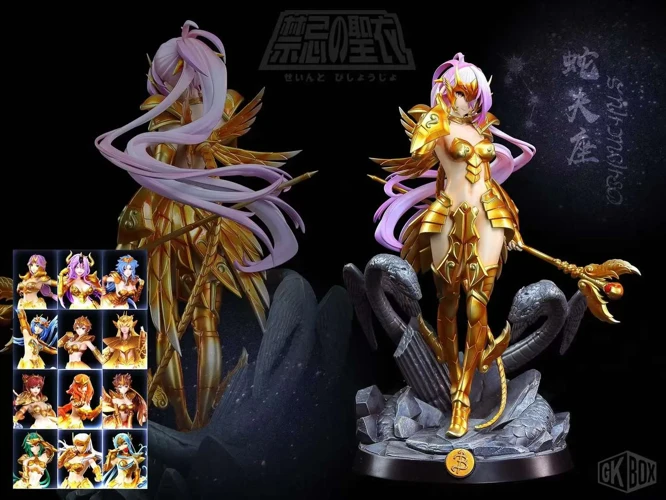
In conclusion, the exploration of the Ophiuchus archetype in literature and art takes us on a mesmerizing journey through ancient mythologies, classic novels, visual masterpieces, and deep psychological insights. We have uncovered the origins of Ophiuchus in mythology, tracing its roots to the wise healers and transformative figures in various cultures. Ophiuchus has been interpreted in different ways throughout history, finding its place in classic novels as well as modern artistic creations. Its symbolism and imagery have inspired artists to depict the archetype in various forms, enticing viewers with its enigmatic presence. At its core, Ophiuchus represents healing, transformation, and the pursuit of wisdom. It shines a light on the shadows of our psyche and invites us to embrace personal growth and enlightenment. The controversy surrounding Ophiuchus in astrology sparks debates and discussions, adding another layer of intrigue to its significance. Whether we choose to explore Ophiuchus through the lens of mythology, literature, art, or personal development, it invites us to delve deeper into our own journeys of healing and self-discovery. So, let us embrace the mysteries of the Ophiuchus archetype and allow its transformative energy to guide us towards a richer understanding of ourselves and the world we inhabit.
Frequently Asked Questions

1. What is the significance of Ophiuchus in astrology?
Ophiuchus is a constellation that lies along the ecliptic, just like the traditional zodiac signs. However, its inclusion in the zodiac has sparked controversy among astrologers. Some believe that Ophiuchus represents the 13th zodiac sign, while others argue that it is not recognized in traditional astrology.
2. How does Ophiuchus differ from the other zodiac signs?
Ophiuchus, often referred to as the “Serpent Bearer,” exhibits qualities of healing, wisdom, and transformation. While other zodiac signs are associated with different elements and characteristics, Ophiuchus stands out with its focus on growth and self-discovery.
3. Are there specific personality traits associated with Ophiuchus?
While Ophiuchus does not have as defined personality traits as the traditional zodiac signs, individuals born under this sign are believed to be seekers of truth, possessing deep insights and a desire for knowledge. They often exhibit strong healing and empathetic qualities.
4. Can Ophiuchus be found in ancient civilizations and mythologies?
Absolutely! Ophiuchus has deep roots in ancient civilizations, with representations found in Greek, Egyptian, and Babylonian mythologies, to name a few. This constellation has been associated with healers, gods of wisdom, and ancient serpent symbolism.
5. Which famous artworks incorporate the Ophiuchus archetype?
The Ophiuchus archetype has inspired various artists throughout history. One notable example is the painting “Medicine” by Gustav Klimt, which portrays Ophiuchus as a central figure surrounded by serpent symbolism and medical imagery.
6. How does Ophiuchus fit into the theme of transformation in literature?
Ophiuchus often appears as a symbol of transformation in literature, representing characters who undergo profound changes, both physically and emotionally. This archetype embodies the journey of self-discovery, growth, and healing.
7. Is there a dark side to the Ophiuchus archetype?
Yes, like any archetype, the Ophiuchus has its shadow side. It can be associated with themes of manipulation, temptation, and the allure of forbidden knowledge. This darker aspect adds complexity and depth to the archetype.
8. What is the controversy surrounding Ophiuchus in astrology?
The controversy lies in whether Ophiuchus should be recognized as the 13th zodiac sign, potentially shifting the alignment and dates of all other zodiac signs. Some argue that it disrupts the traditional system, while others believe it adds a new dimension to astrological interpretations.
9. How can one apply the Ophiuchus archetype to personal development?
Understanding the Ophiuchus archetype can offer insights into personal healing and growth. Embracing qualities such as seeking knowledge, embracing transformation, and nurturing empathetic qualities can contribute to personal development.
10. Can Ophiuchus have an impact on artistic creations in the modern world?
Absolutely! The Ophiuchus archetype continues to inspire contemporary artists and writers, providing them with a rich source of symbolism and themes of transformation, healing, and the pursuit of wisdom.
References
- The Wounded Healer as Cultural Archetype – Purdue e-Pubs
- The Great Mother: An analysis of the Archetype, by Erich …
- The Twelve Archetypes
Frequently Asked Questions

1. How does the Ophiuchus archetype differ from other zodiac signs?
The Ophiuchus archetype is unique in the sense that it does not traditionally belong to the twelve zodiac signs commonly used in astrology. It is often considered as the 13th sign, representing the Serpent Bearer who brings healing and transformative energy.
2. Is Ophiuchus considered a positive or negative archetype?
Ophiuchus is not inherently positive or negative, but rather represents a complex and multifaceted archetype. It embodies themes of healing, transformation, and wisdom, while also delving into the darker aspects of human existence.
3. Can you find Ophiuchus in ancient mythology?
While Ophiuchus is not widely mentioned in classical mythology, some scholars believe that the archetype draws inspiration from the Greek myth of Asclepius, the god of healing and medicine.
4. Are there any famous works of literature that feature the Ophiuchus archetype?
Classic novels do not often directly reference the Ophiuchus archetype, but elements of healing, transformation, and the pursuit of knowledge can be found in works such as “The Alchemist” by Paulo Coelho or “The Odyssey” by Homer.
5. How is the Ophiuchus archetype portrayed in modern literature?
Modern literature often showcases the Ophiuchus archetype through characters who embody the qualities of healers, guides, or individuals seeking profound transformation. Examples include “The Shack” by William P. Young or “The Power of Now” by Eckhart Tolle.
6. What symbolism and imagery are associated with Ophiuchus in visual art?
Ophiuchus is often depicted with a serpent, symbolizing the transformative powers of healing and wisdom. Other common symbols include the caduceus, a staff entwined with serpents, and the Greek letter “theta” representing Ophiuchus’ connection to ancient Greek mythology.
7. Can you provide examples of famous artworks featuring the Ophiuchus archetype?
“The Medicine Man” by Pablo Picasso and “The Anatomy Lesson of Dr. Nicolaes Tulp” by Rembrandt van Rijn are renowned artworks that explore themes of healing, transformation, and the human connection to the universe, reminiscent of the Ophiuchus archetype.
8. What is the psychological significance of Ophiuchus?
Ophiuchus holds psychological significance as it represents the journey of healing, transformation, and self-discovery. It encourages individuals to confront their inner shadows and embrace change in order to achieve personal growth and wholeness.
9. How does Ophiuchus relate to astrology and the controversial 13th zodiac sign?
Ophiuchus has caused controversy in the world of astrology, as some argue for its inclusion as the 13th zodiac sign. However, traditional astrology follows a system based on twelve signs. Nevertheless, Ophiuchus holds astrological significance for those who explore beyond the traditional zodiac system.
10. How can individuals apply the Ophiuchus archetype to personal development?
Individuals can apply the energies of the Ophiuchus archetype by delving into the realms of healing, self-reflection, and transformation. Embracing one’s own wounds, seeking knowledge, and working towards personal growth can all be inspired by the Ophiuchus archetype.







